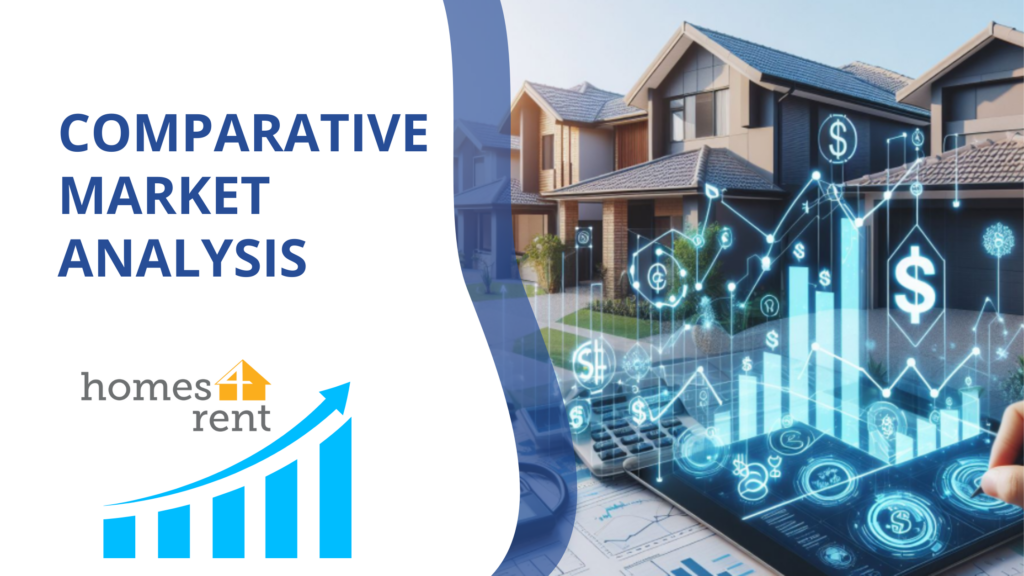If you are a property manager, you know how important it is to make informed decisions when it comes to renewing a lease. You cannot afford to rely on guesswork or outdated information. You need to have a clear picture of the current market conditions and how they affect your properties. You also need to consider the needs and expectations of your tenants and your owners. How can you do that? By using a Comparative Market Analysis (or CMA).
A CMA is a strategic tool that helps you manage your properties better. It provides you with valuable market insights and data on comparable properties that have been recently or currently leased in South-East Queensland. It helps you compare your properties with others in the same area and see how they perform in terms of rent, vacancy, and demand. It also helps you identify the strengths and weaknesses of your properties and make adjustments accordingly.
Let’s look at a case study illustrating the importance of utilising the power of CMA in Coomera:
In this case study, we will compare two different rental properties in Coomera, owned by different property investors. One landlord used Comparative Market Analysis (or CMA) to manage his property, while the other did not. We will see how CMA can give property investors a tighter edge on their investment, by helping them to maximise their rental income, minimise their vacancy rates, and maintain their tenant satisfaction.
Property A: A 4-bedroom house with a pool and a double garage, located in a quiet cul-de-sac, close to the Coomera train station and the Coomera State School. The property was purchased in 2020 for $650,000, and has been rented out since then. The landlord did not use CMA to manage his property. He relied on his own experience and intuition to set the rent and adjust it over time. He also did not monitor the market trends and fluctuations, or compare his property with others in the same area. He did not communicate with his tenants or his property manager regularly, and he did not invest in any improvements or upgrades for his property.
Property B: A 4-bedroom house with a pool and a double garage, located in a quiet cul-de-sac, close to the Coomera train station and the Coomera State School. The property was purchased in 2020 for $650,000, and has been rented out since then. The landlord used CMA to manage his property. He used a data-driven approach to set the rent and adjust it over time, based on the market insights and data on comparable properties that have been recently or currently leased in Coomera. He also monitored the market trends and fluctuations, and compared his property with others in the same area. He communicated with his tenants and his property manager regularly, and he invested in cost-effective and high-impact improvements and upgrades for his property.
The table below shows the comparison of the two properties in terms of rent, vacancy, and demand:
| Property | Rent | Vacancy | Demand |
| A | $700 per week | 45 days | Low |
| B | $800 per week | 15 days | High |
As we can see, property B has a higher rent, a lower vacancy, and a higher demand than property A, despite being similar in size, location, and features. This is because property B has a more realistic and competitive rent, as it has been adjusted according to the market conditions and the tenant’s income. Property B also has a higher appeal and value, as it has been improved and upgraded with new appliances, painting, and landscaping. Property B also has a higher tenant satisfaction, as it has been communicated and serviced well by the landlord and the property manager.
Property B also has a higher and more consistent rental income than property A, despite having the same purchase price. This is because property B has a higher occupancy rate and a lower turnover rate than property A, as it has attracted and retained more tenants. Property B also has a lower maintenance cost and a lower vacancy cost than property A, as it has been kept in good condition and has avoided long periods of vacancy.
The table below shows the comparison of the return on investment (ROI) of the two properties over the past 12 months:
| Property | Rental Income | Expenses | ROI % |
| A | $30,800 | $15,000 | 2.4% |
| B | $41, 600 | $10,000 | 4.8% |
As we can see, property B has a higher ROI than property A, despite having the same purchase price. This is because property B has a higher rental income and lower expenses than property A, as it has maximised its rent, minimised its vacancy, and maintained its property.
Adjustments: A Data Driven Approach
Homes for Rent is careful when it comes to suggesting rent increases. We don’t just rely on our intuition or experience. We use a data-driven approach that involves evaluating the tenant’s income over the past 12 months, especially if it has not changed since the start of the lease (this is also an important factor to regularly evaluate to comply with your Landlord insurance). We also use the standard 30% of income rule to assess the affordability of the rent. This way, we can take into account the economic situation of the tenant and avoid any difficulties in explaining the rent adjustment.
Excellent communication is imperative when adjusting rents. At Homes 4 Rent we are committed to satisfying our clients, and we have excellent negotiation skills. We handle the communication between the tenant and the owner with tact and professionalism, aiming to achieve a win-win situation for both parties. We explain the reasons behind the rent adjustment, using the CMA as evidence. We also highlight the benefits of staying in the property, such as the location, the features, and the service. We listen to the feedback and concerns of the tenant and the owner, and we try to find a mutually agreeable solution.
Market Dynamics: A Forward-Looking Perspective
As the property market changes constantly, Homes for Rent strives to remain alert, current and proactive. We monitor the market trends and fluctuations, and we use the CMA to update our pricing and marketing strategies. We also use the CMA to anticipate the future needs and expectations of the tenants and the owners, and we adjust our services and offerings accordingly.
As of February 2024, we have noticed that tenants are moving towards properties with lower rental values. Properties under $600 per week are seeing more demand, while those between $600 and $1000 are stable. Properties over $1000 per week are facing more competition, as tenants expect more upgrades and features from them. This indicates a shift in tenant preferences and expectations.
We use this information to optimise our properties and make them more attractive to the tenants. We also use this information to advise our owners on how to increase the value and appeal of their properties. We suggest cost-effective and high-impact improvements, such as painting, landscaping, or installing new appliances. We also help our owners to market their properties effectively, using professional photos, videos, and descriptions.
By using a CMA, we can help our clients to achieve the best possible outcomes for their properties. We can help them to maximise their rental income, minimise their vacancy rates, and maintain their tenant satisfaction. We can also help them to stay ahead of the competition and adapt to the changing market conditions. A CMA is not just a tool, it is a key to effective property management.
If you’d like to talk more with our team about managing your investment property professionally, contact us to hear more. Homes 4 Rent are more than happy to discuss your needs.


